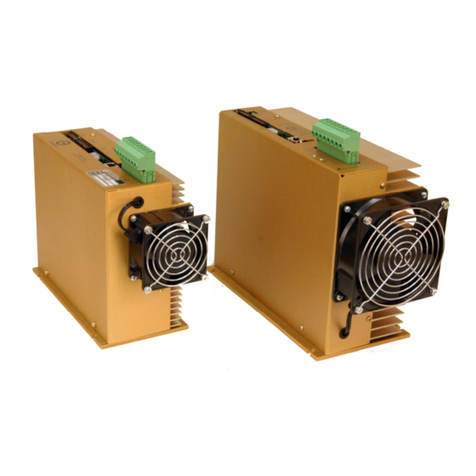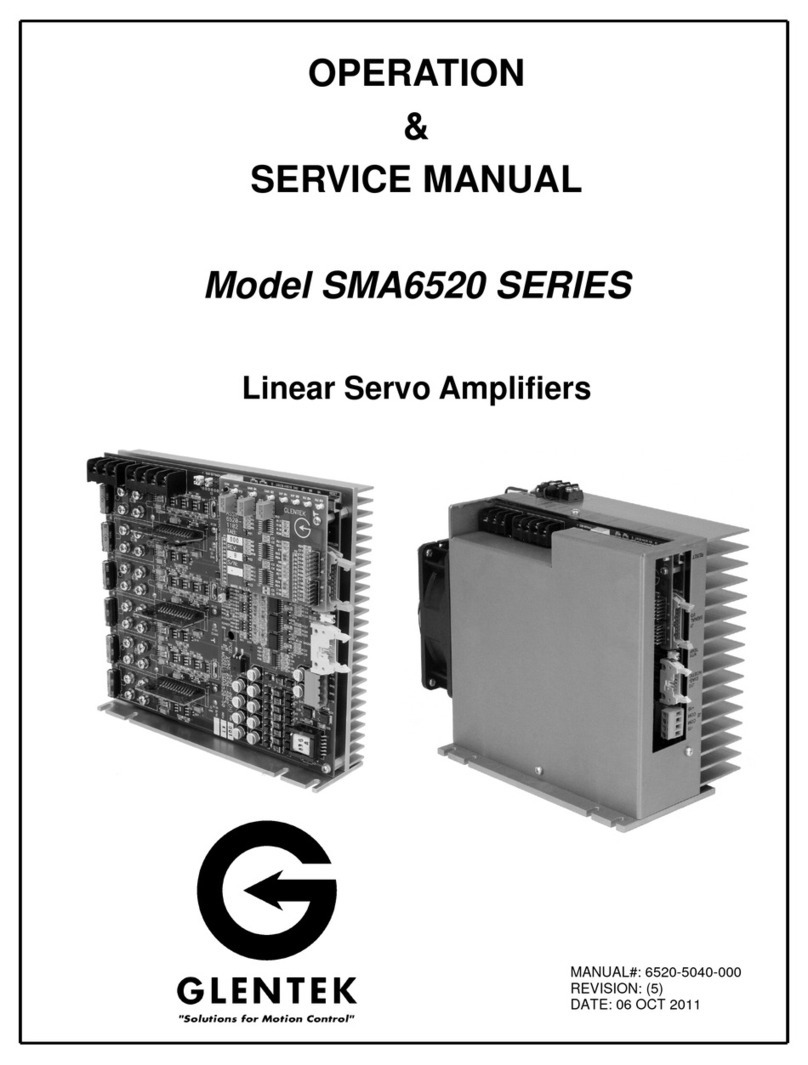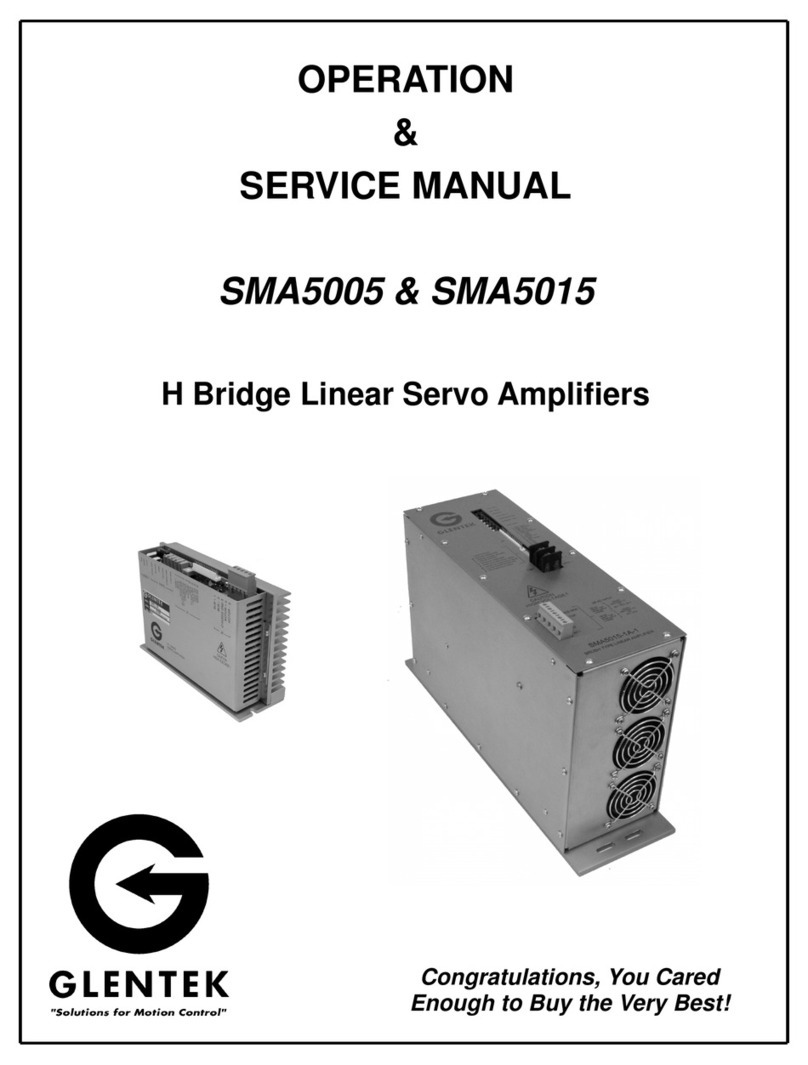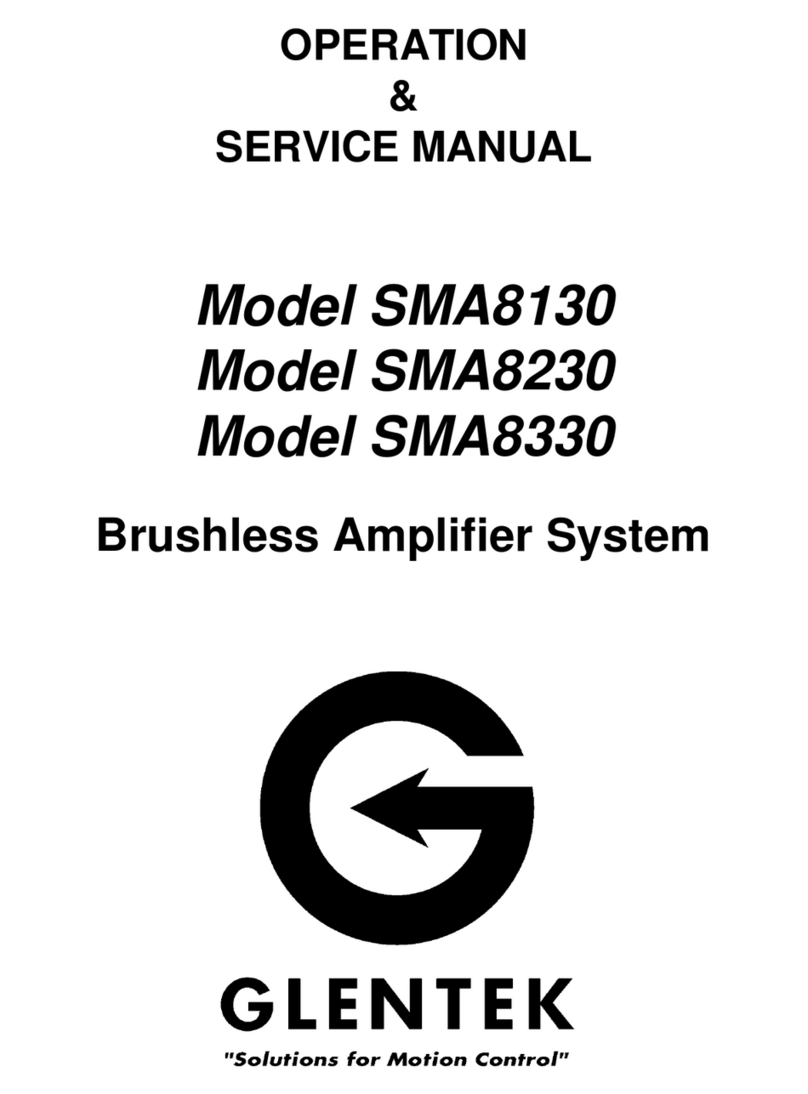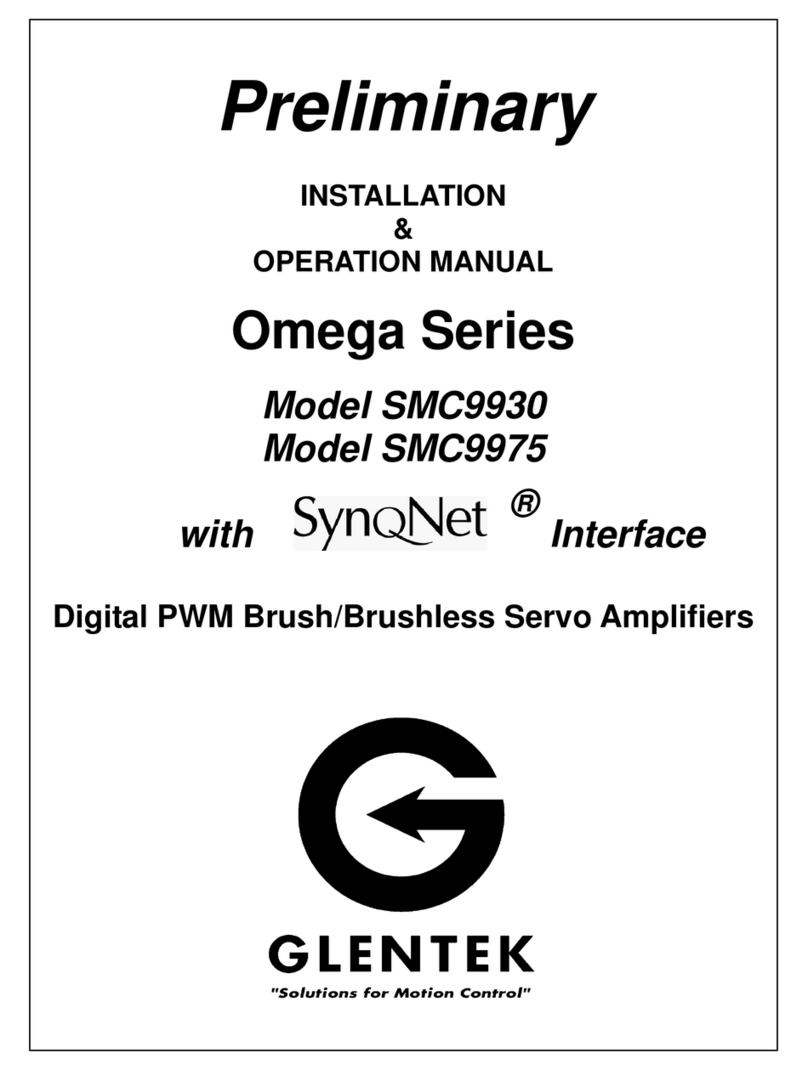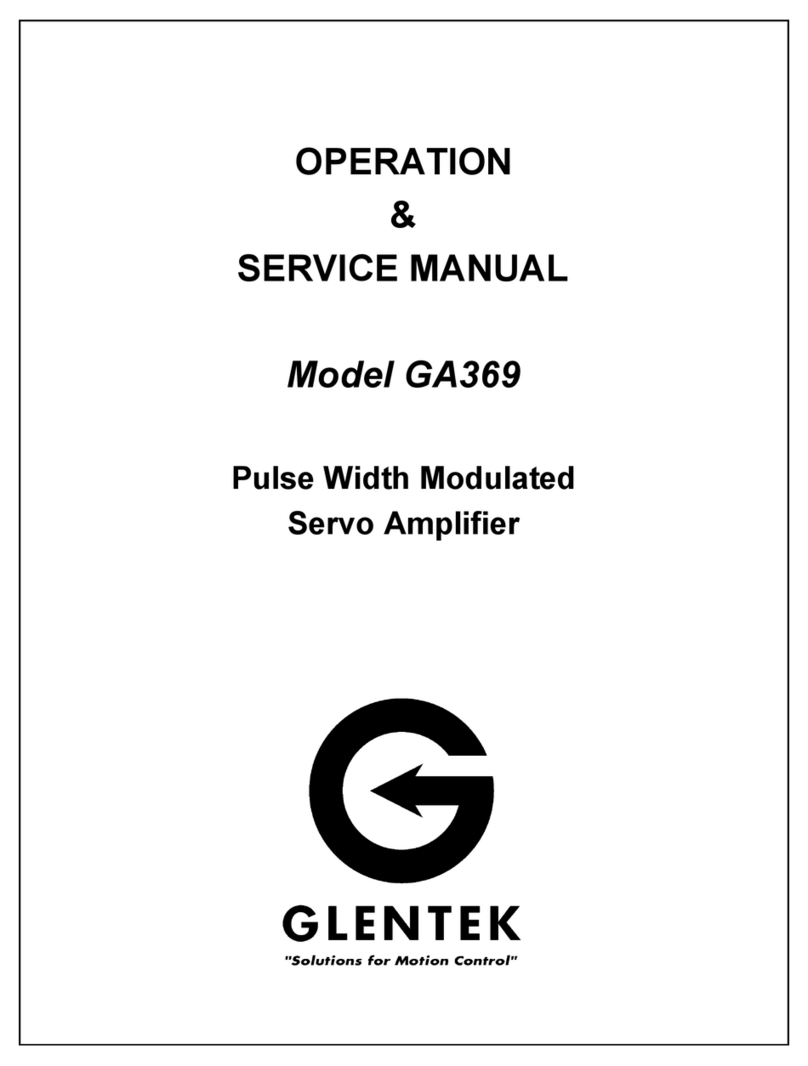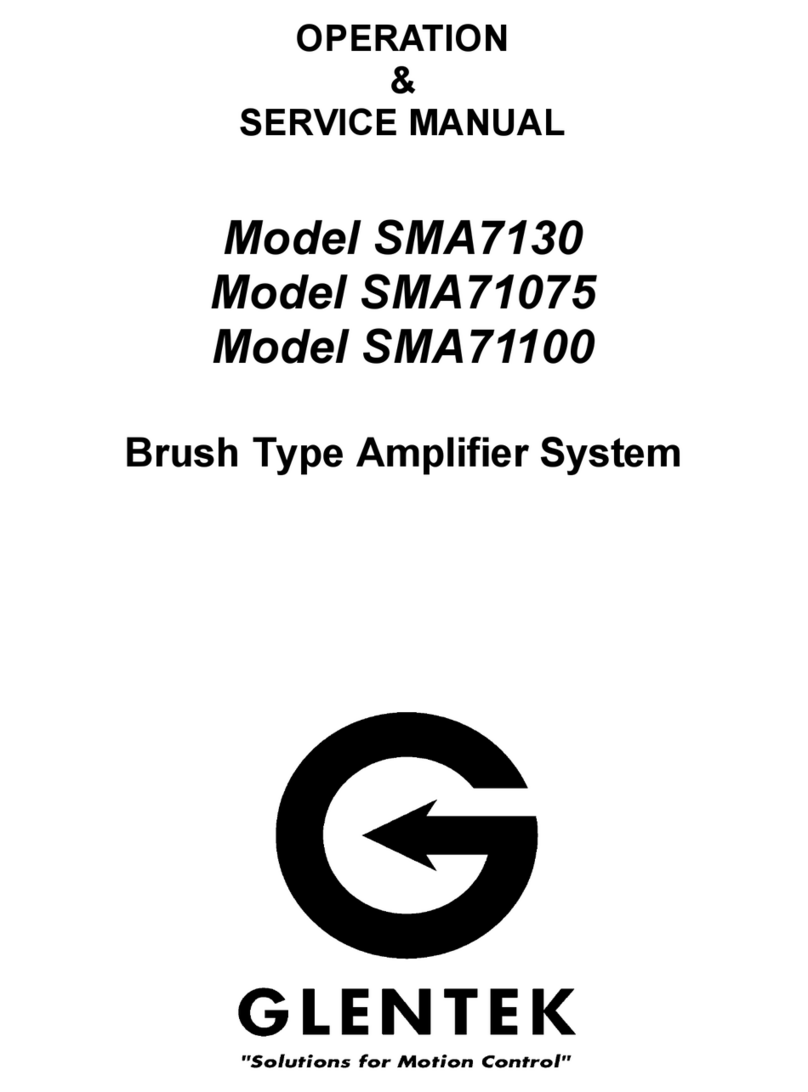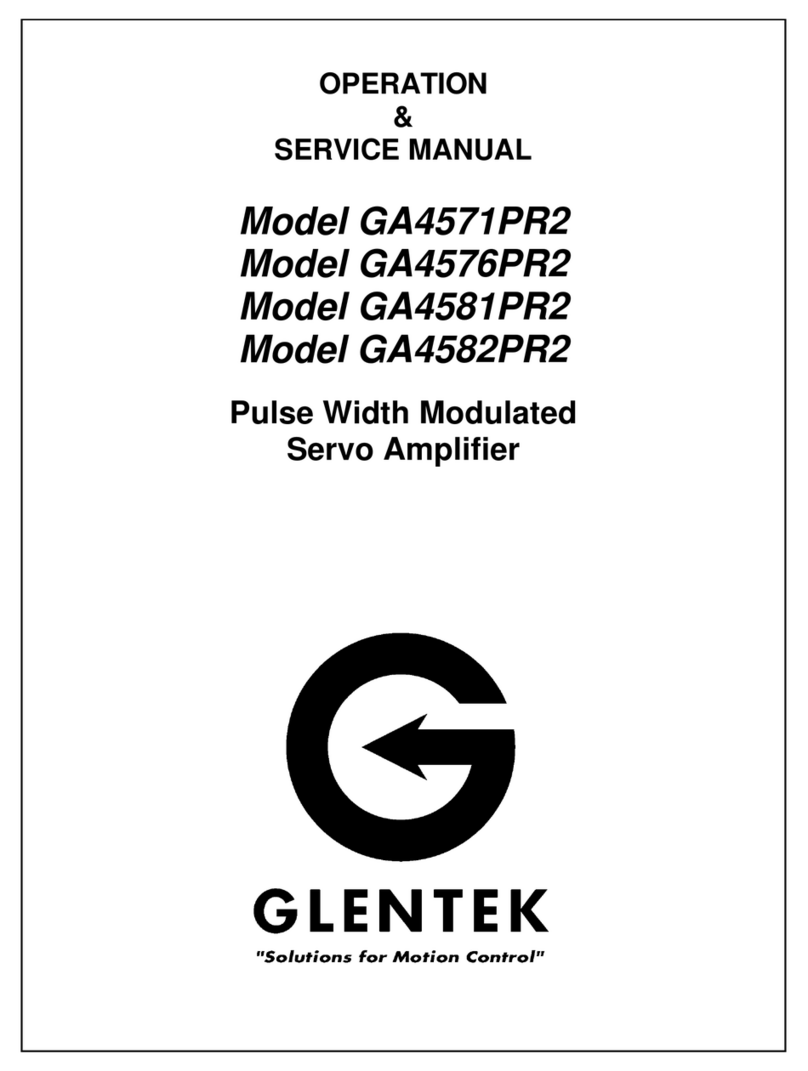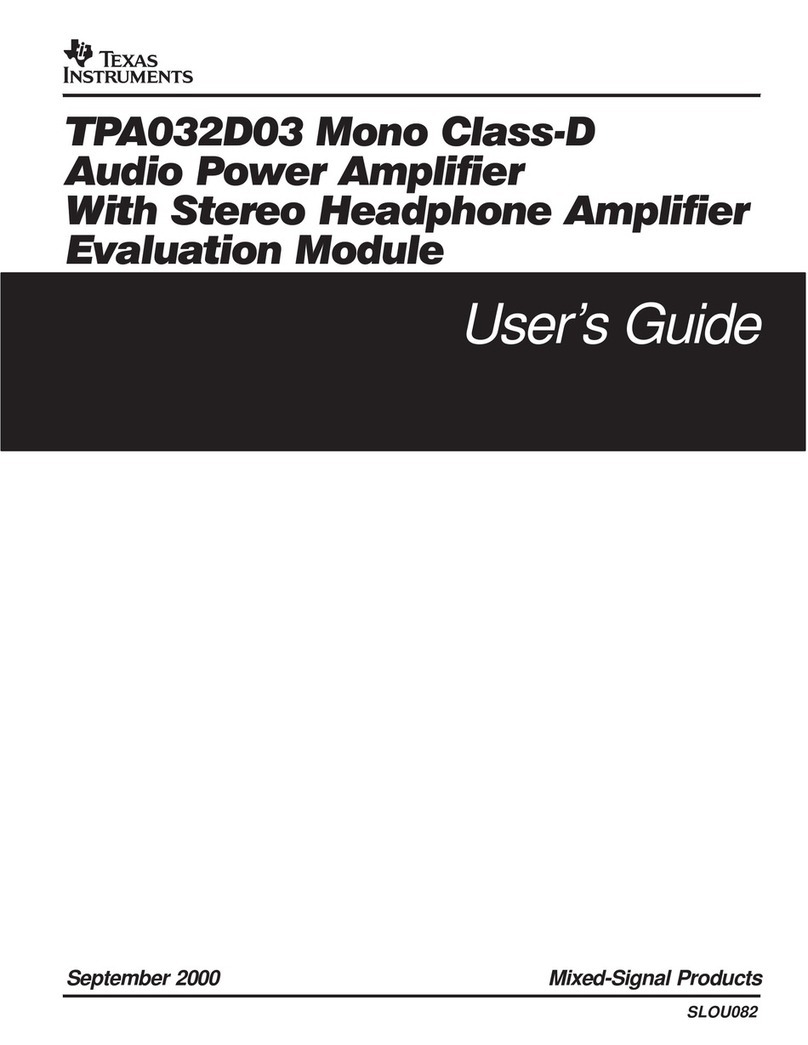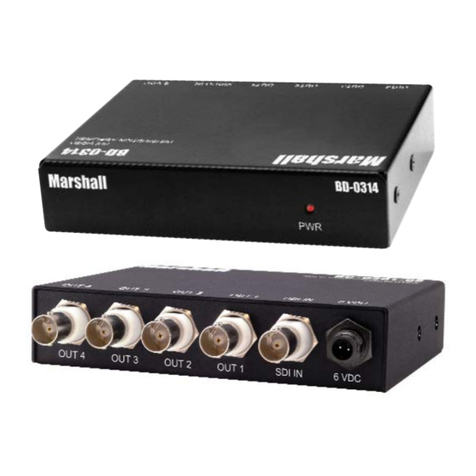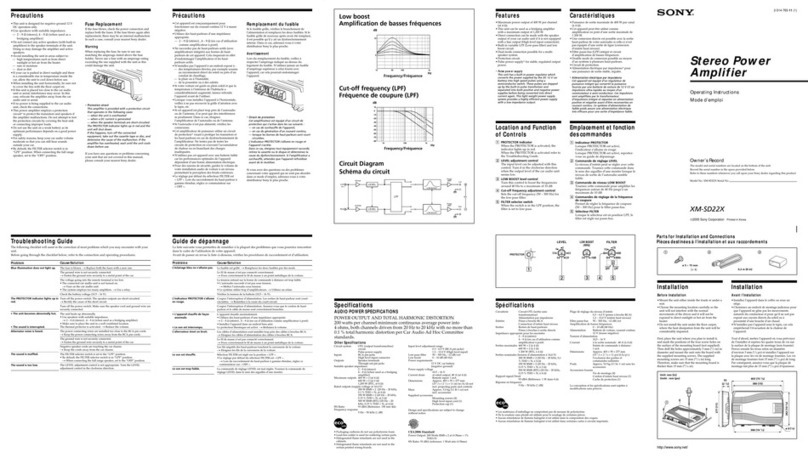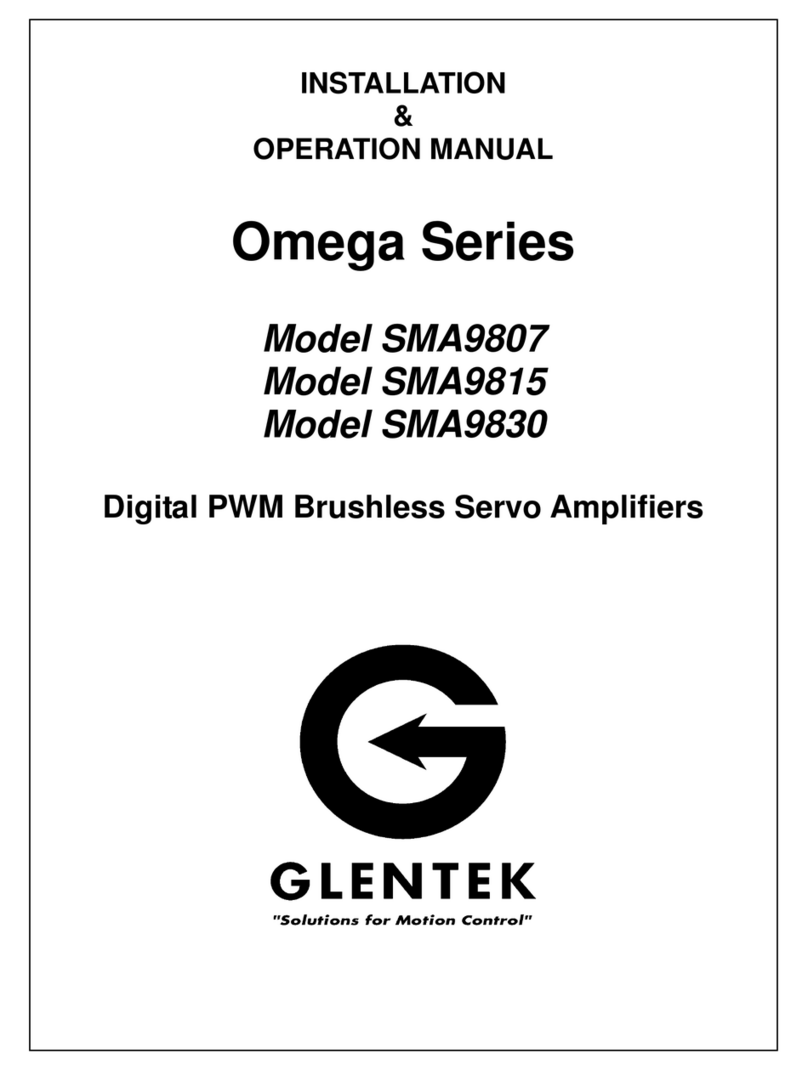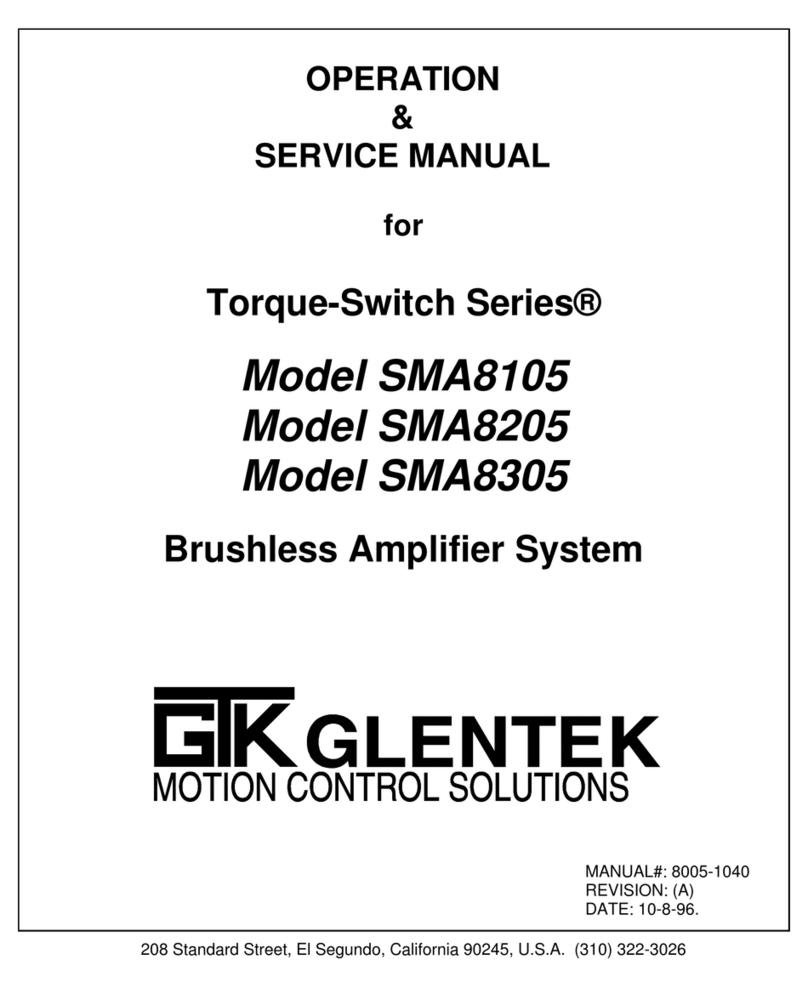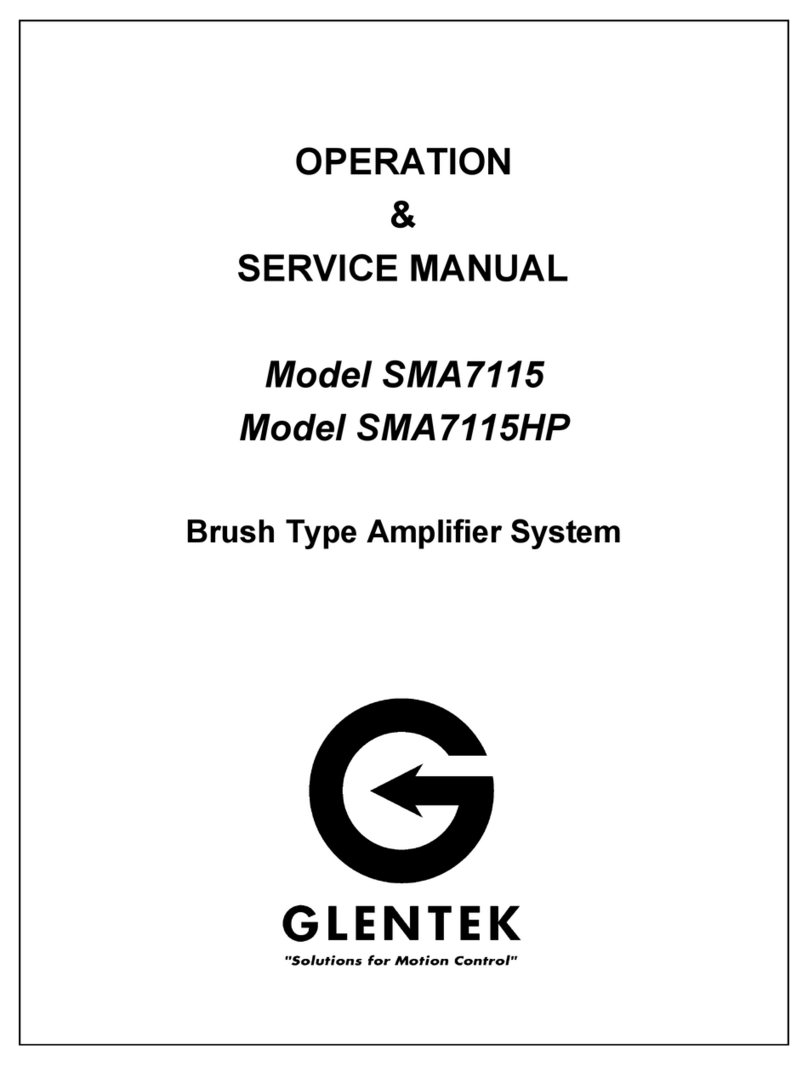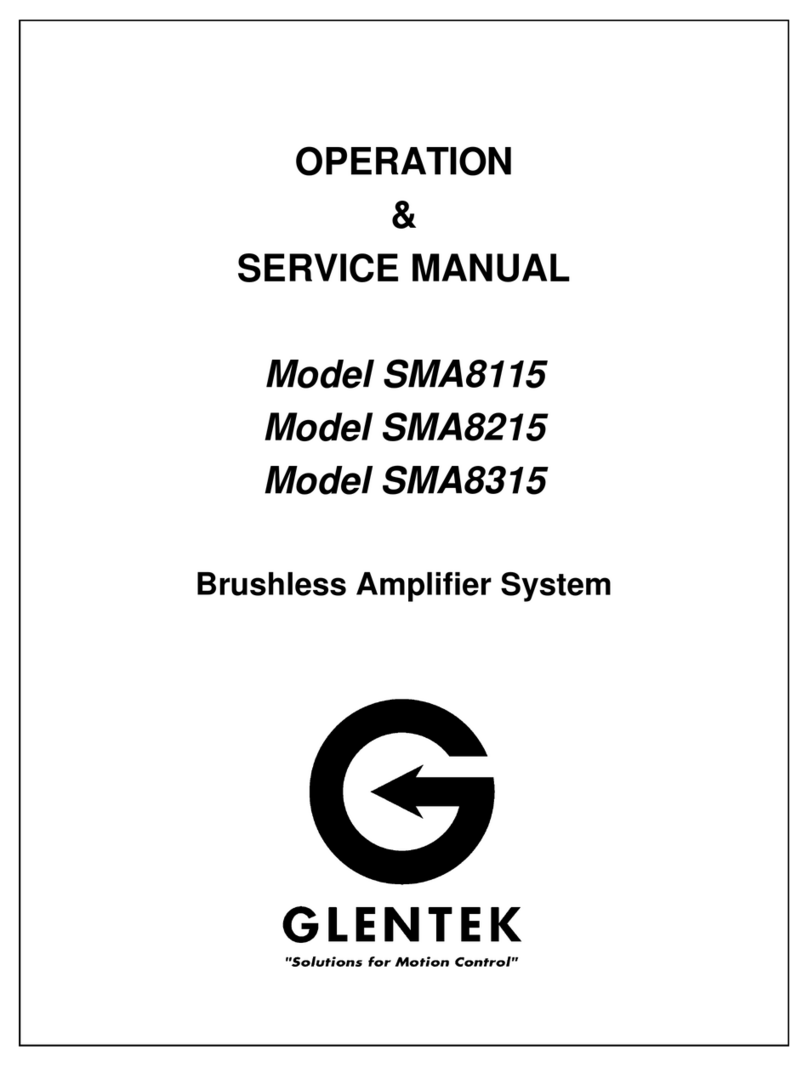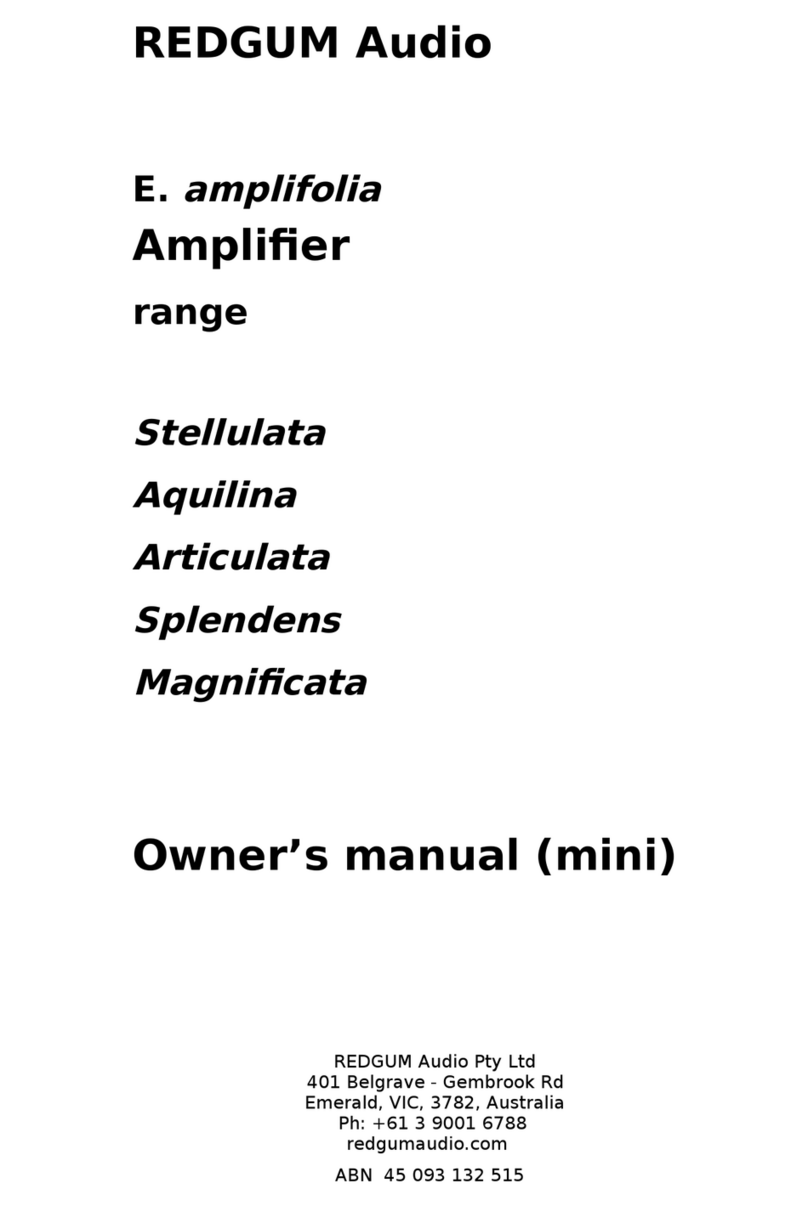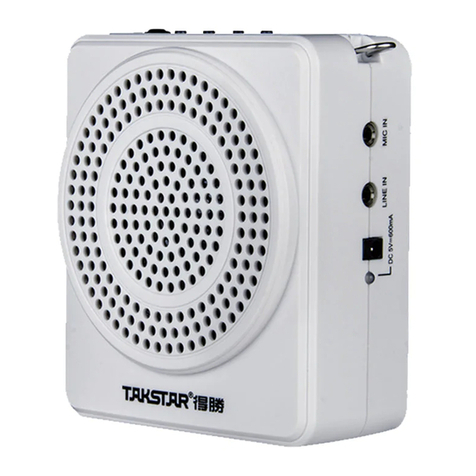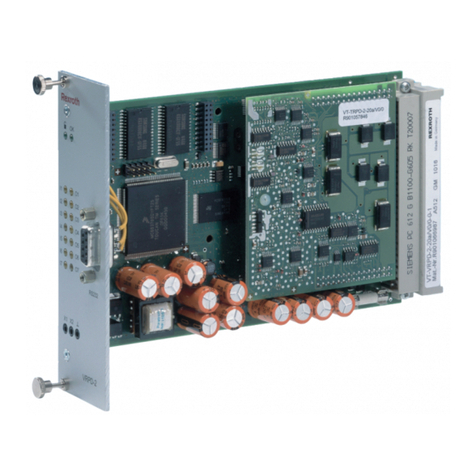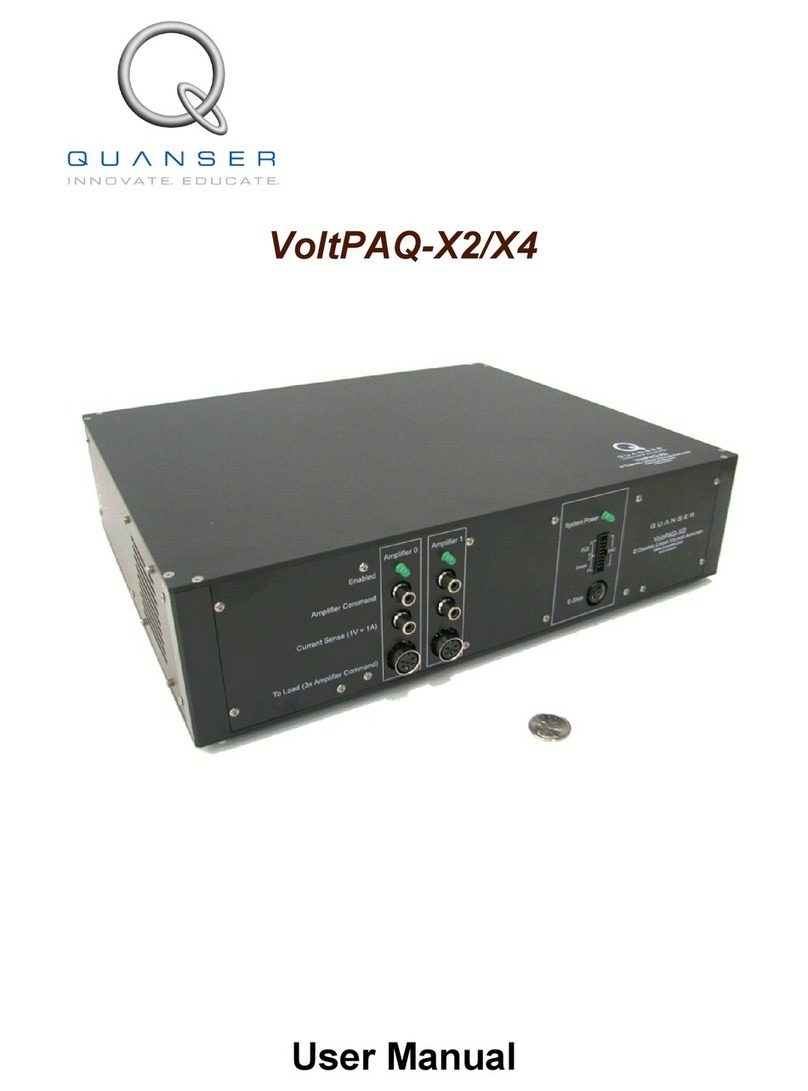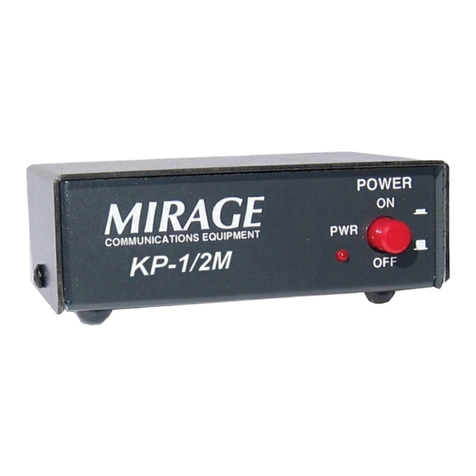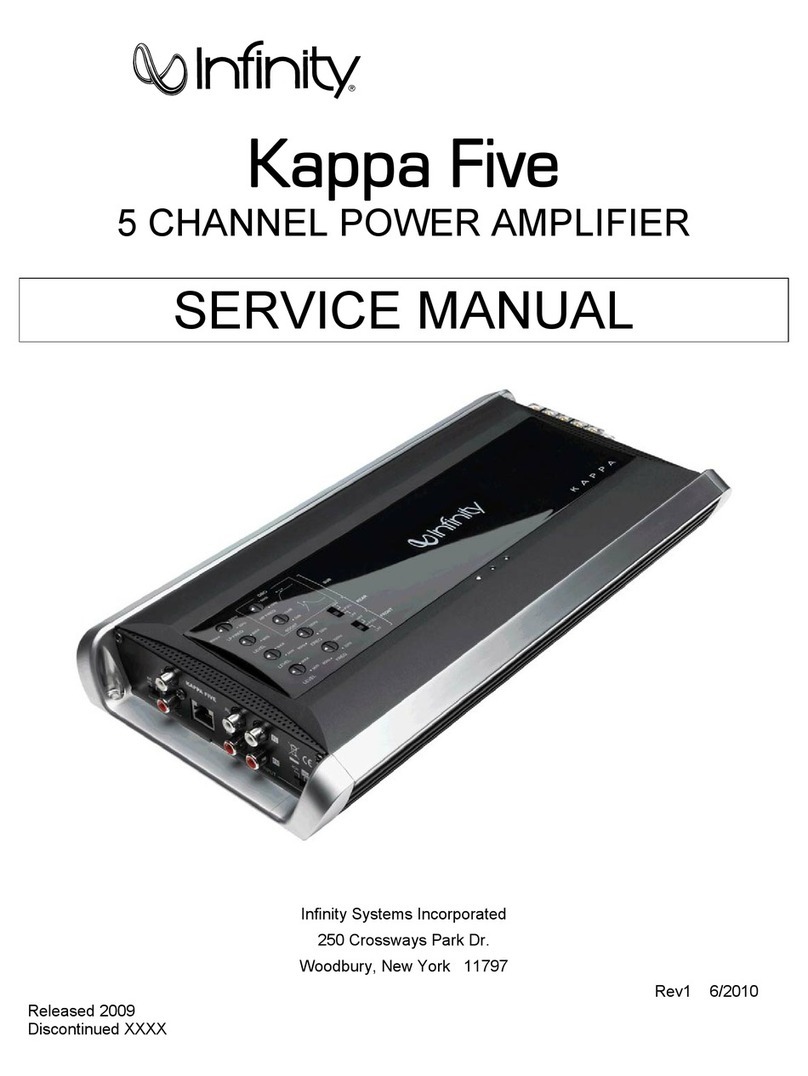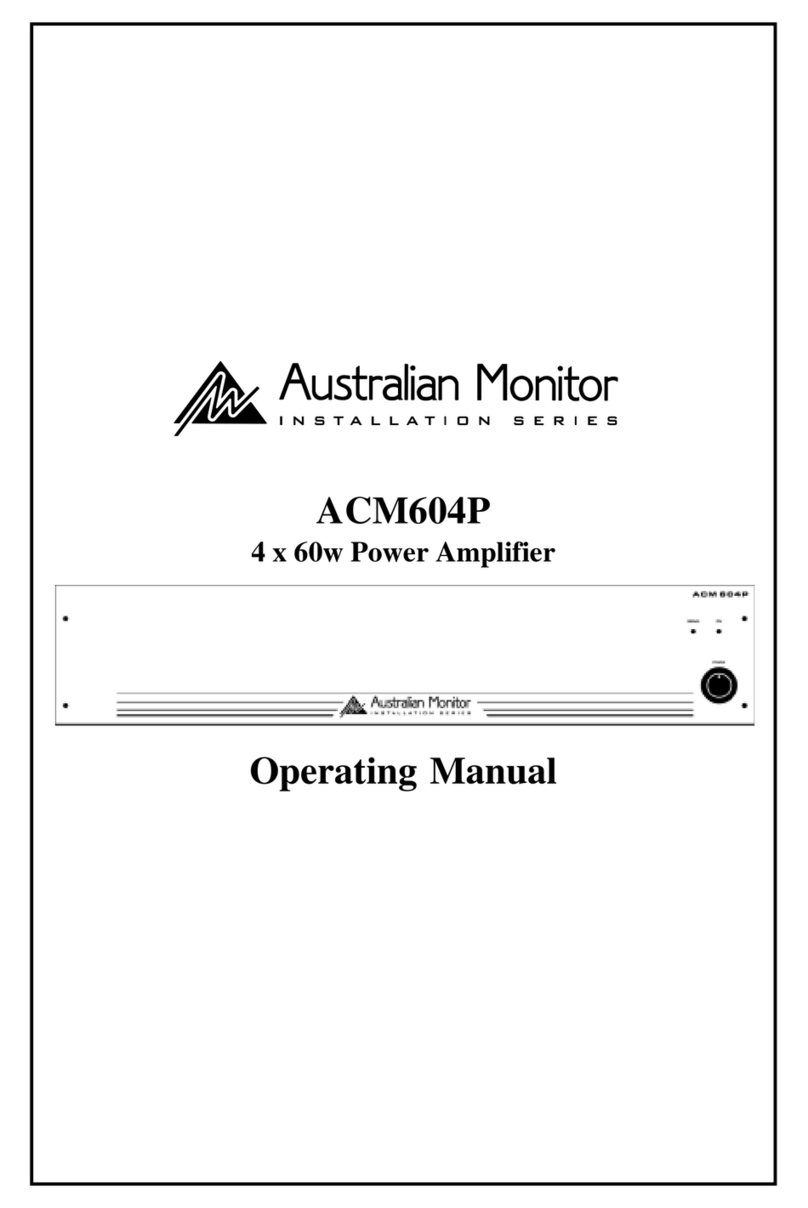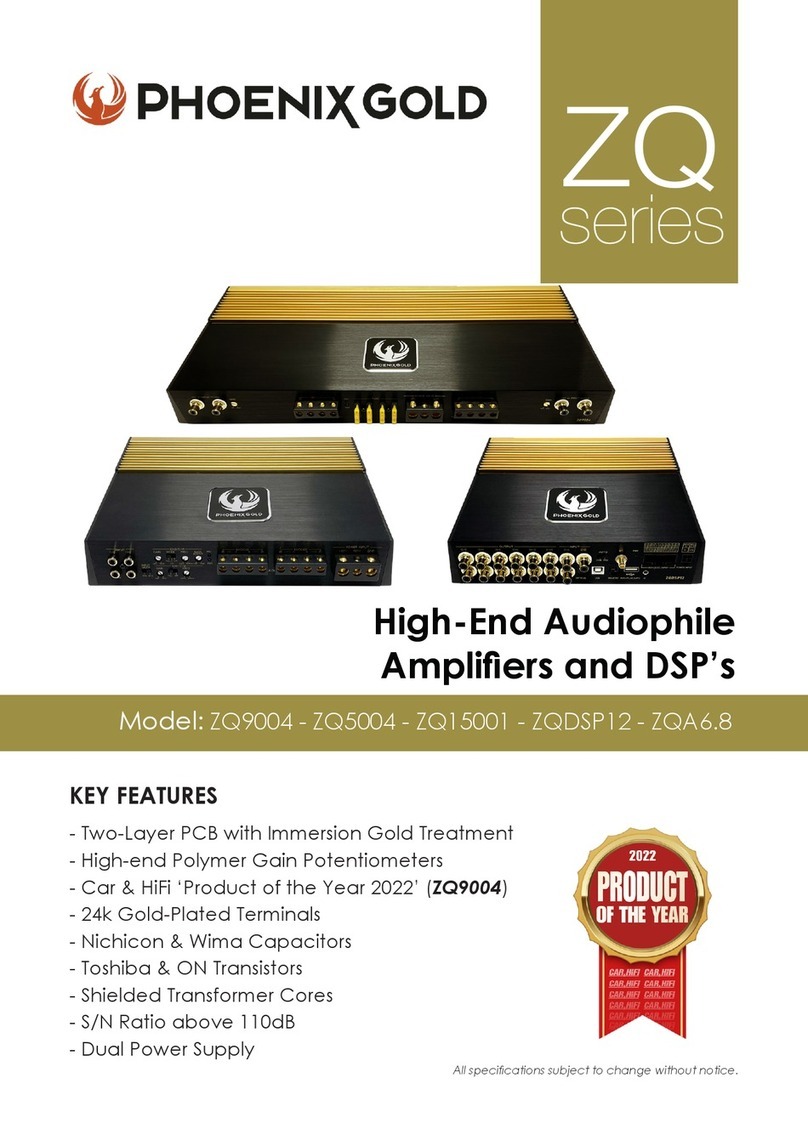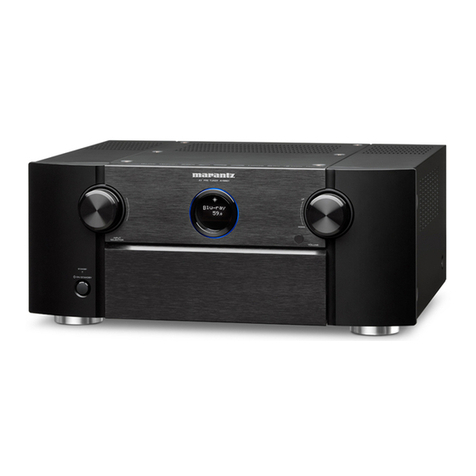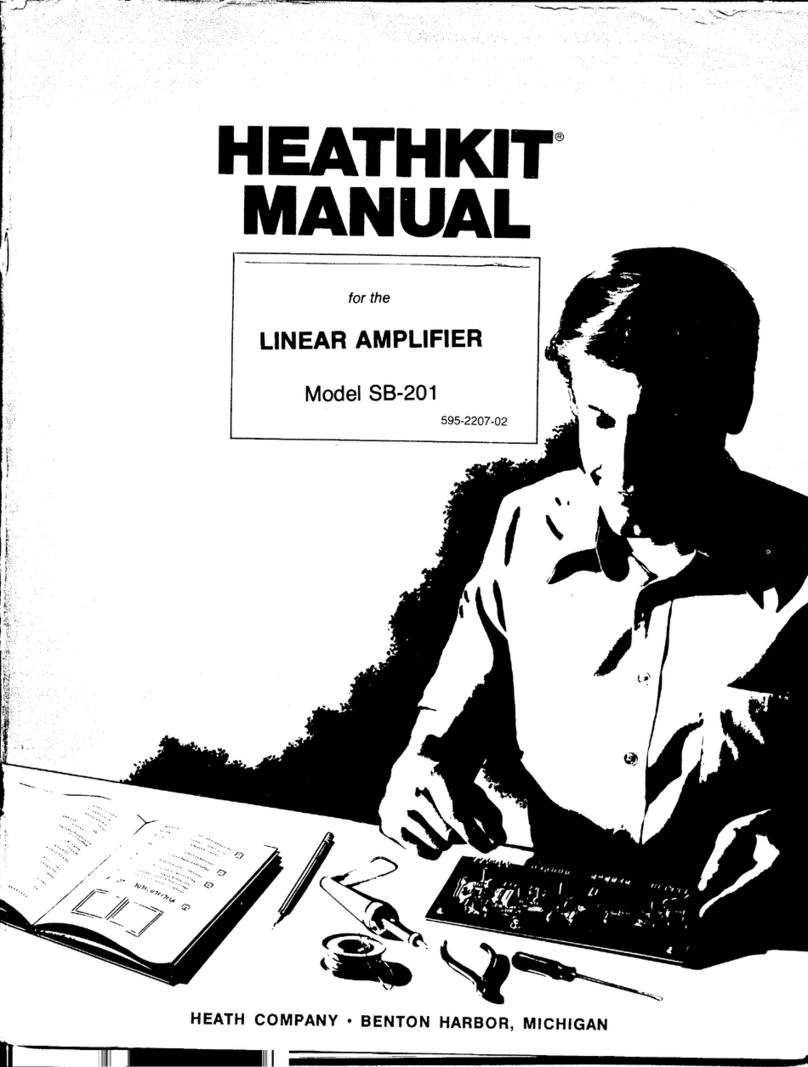
14GLENTEK Inc., 208 Standard Street, El Segundo, California 90245, U.S.A. (310) 322-3026
SMA8730
Chapter Four: Installation
4.1 Introduction:
This chapter provides information for connecting amplifiers to your system. If you need
additional help, contact a Glentek applications engineer.
4.2 Mounting:
Appendix A contains all the wiring diagrams, assembly drawings, and mechanical informa-
tion necessary to install the amplifiers. The amplifier package should be mounted in a
clean, dry enclosure, free of dust, oil, or other contaminants.
NEVER INSTALL THE AMPLIFIER PACKAGE IN ANY LOCATION WHERE
FLAMMABLE OR EXPLOSIVE VAPORS ARE PRESENT.
IMPORTANT:Muffin fan(s) are mounted along one side of the baseplate to provide
cooling. At least 3 inches must be allowed between the fan side and the side opposite the
fans and any other surface. The clearance to any other side of the amplifier package is not
critical, although sufficient space should be allowed for easy wiring and servicing.
4.3 Wiring:
4.3.1 RFI/EMI and Wiring Technique:
IMPORTANT: All PWM equipment inherently generates radio-frequency interfer-
ence (RFI), and wiring acts as antennae to transmit this interference. In addition,
motors inherently generate electromagnetic interference (EMI). Unless the wiring is
very short, some sort of shielding on the motor wires is necessary to meet FCC
RFI/EMI guidelines and to protect other equipment from the effects of RFI/EMI. We
recommend that shielded wire be used, or the wires should be run in metallic conduit.
The shield or conduit should be connected to the amplifier baseplate, which in turn
must be earth grounded. In addition, a conductor of the same gauge as the motor
wires must be connected from the motor case to the amplifier baseplate to provide
protection from shock hazard. The earth grounding is necessary to meet National
Electrical Code (NEC) requirements as well as suppressing RFI/EMI.
Additional RFI suppression may be obtained by placing inductors in each motor lead
near the amplifier. Consult a Glentek applications engineer for inductor recommen-
dations. Glentek stocks a complete line of inductors for virtually every application.
IMPORTANT: The signal wiring to hall-sensors and encoder, and the signal inputs
to the amplifier are susceptible to noise pickup. Excessive noise pickup will cause
erratic amplifier operation. We urge that each signal input be run in a twisted-pair,
shielded cable. The hall-sensor signal lines and the encoder signal lines should be
CHAPTER FOUR: INSTALLATION




















